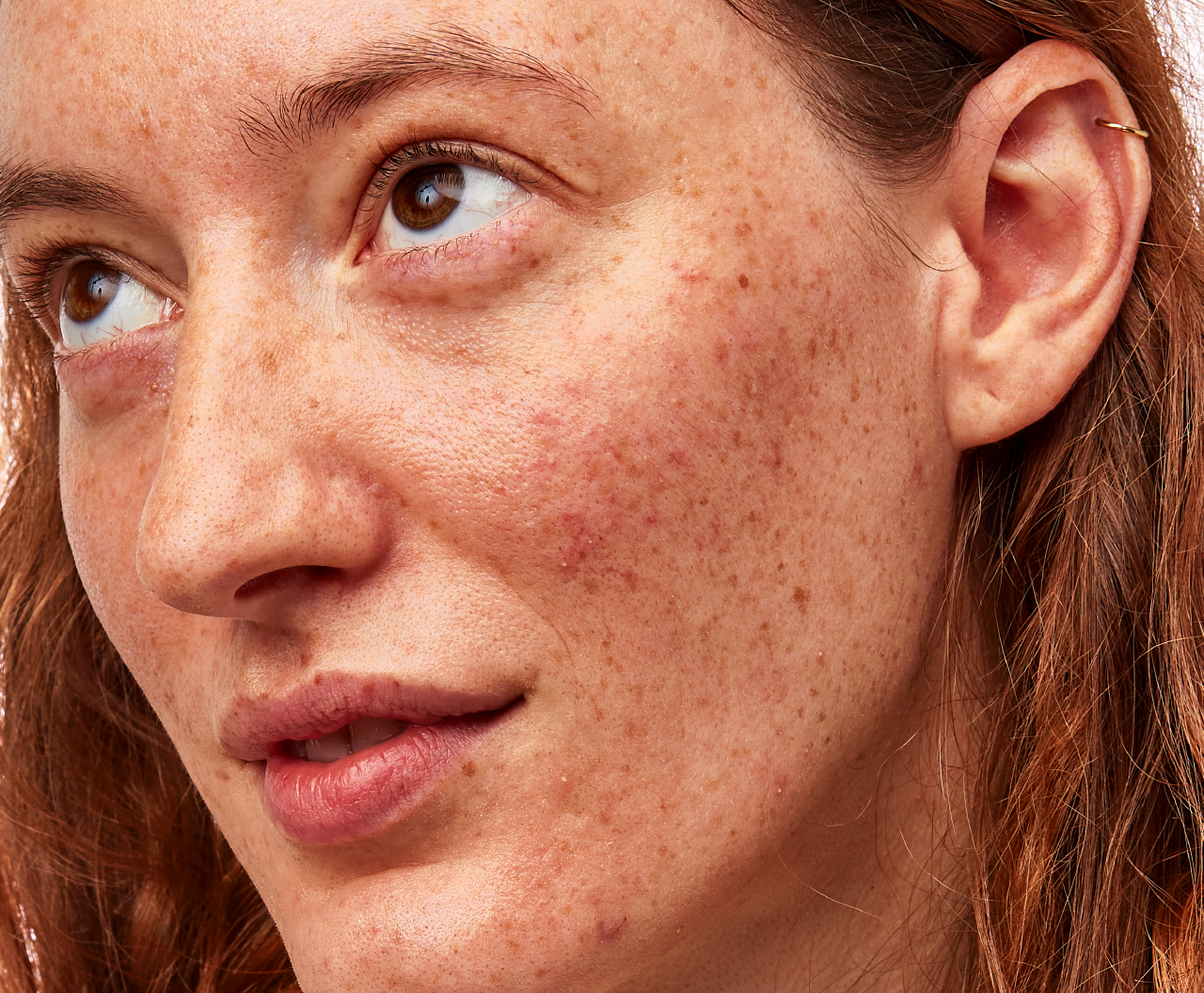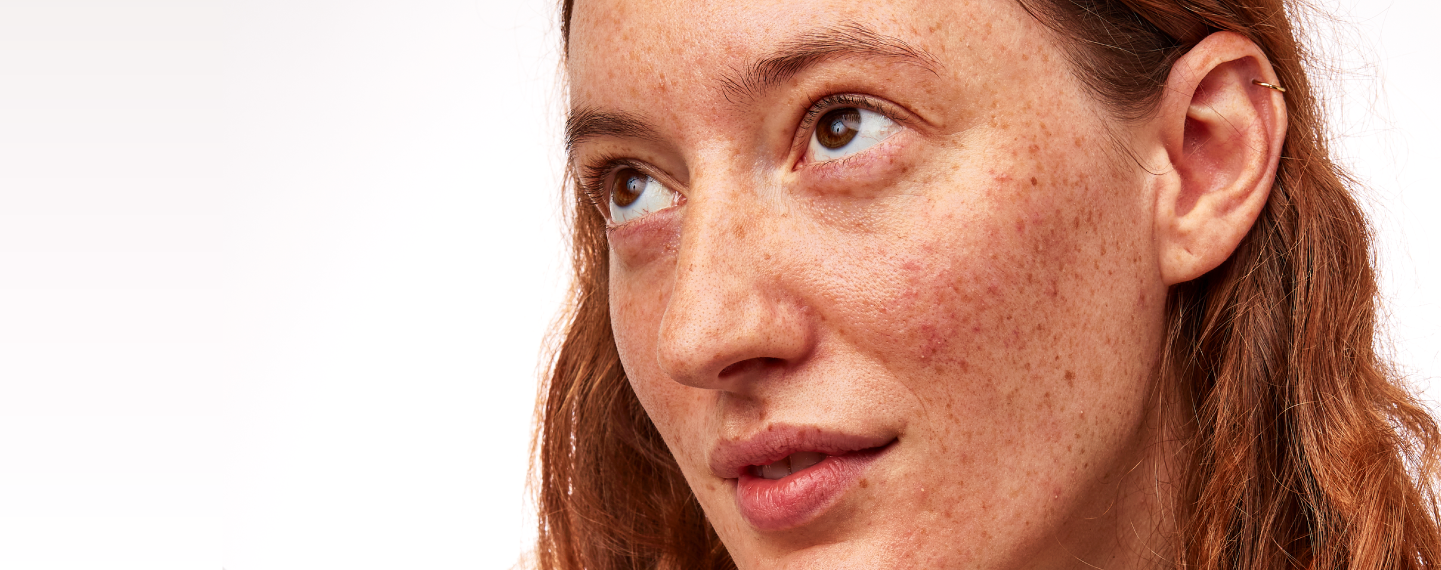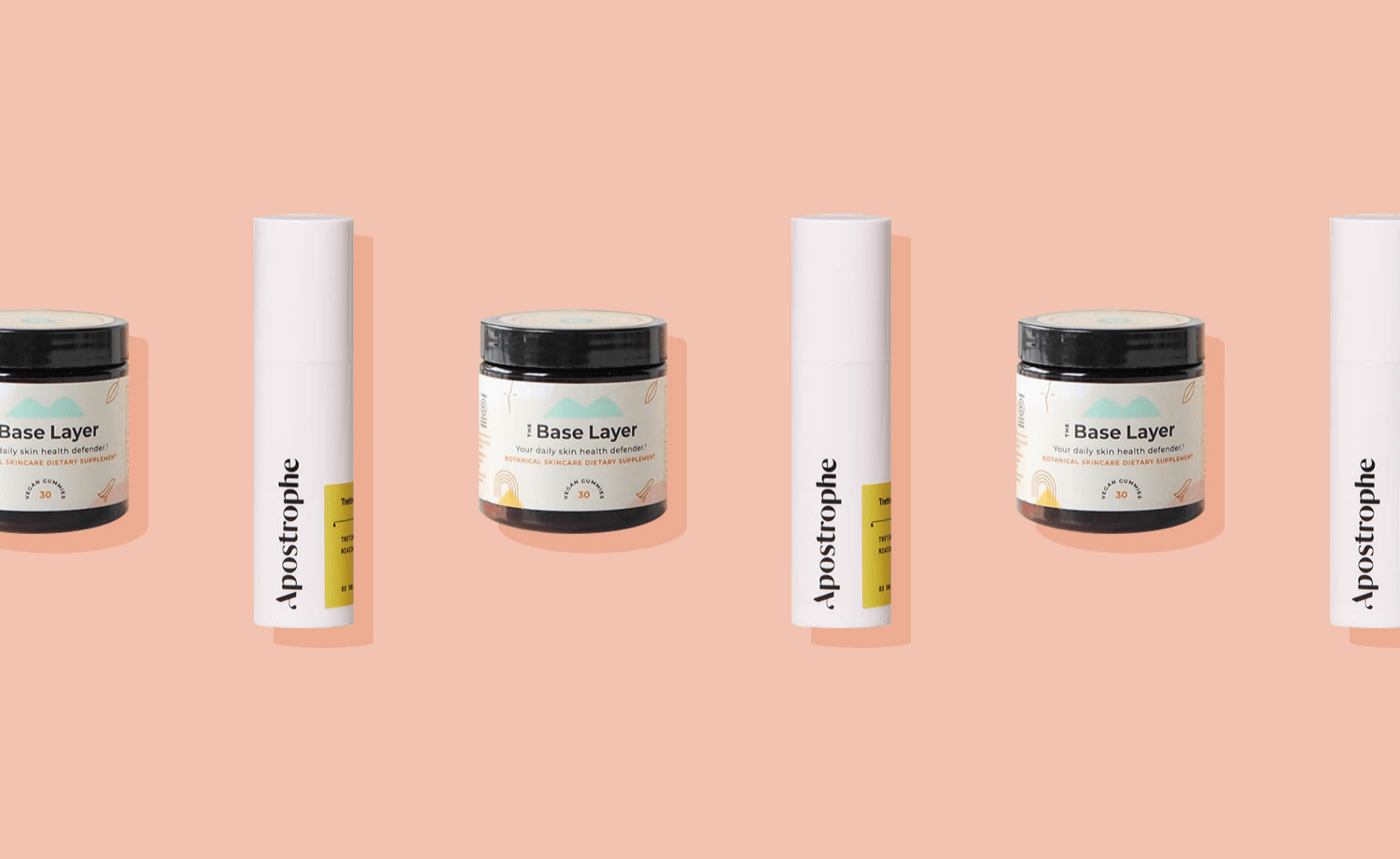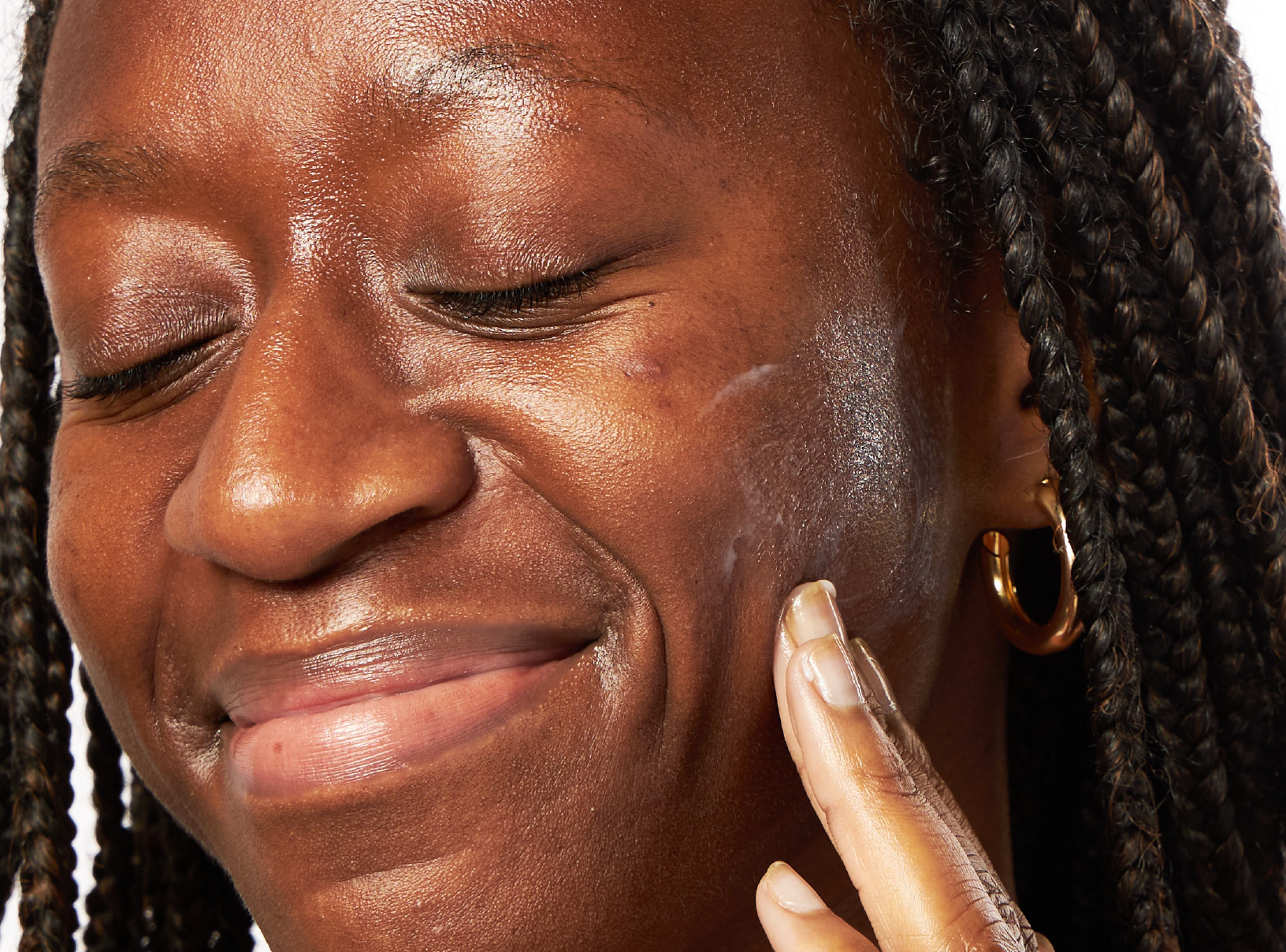Deep Dives
The Science Of The Skin Microbiome


SHARE
Deep Dives
The Science Of The Skin Microbiome
Medically reviewed by Aimee Paik, MD
Written by Apostrophe Team
Last updated 8/1/2024
Probiotics. Prebiotics. Antibiotics. You may be hearing a lot of buzz around these terms in scientific research communities and from marketing claims in your local skincare aisle. Instead of claiming to eliminate bacteria, many different companies are advocating for improving the bacteria that already colonizes our bodies. But what does the science really say about how these products may help our skin? We sat down with board-certified dermatologist Dr. Aimee Paik, and Sundaily’s co-founder and Chief Scientific Officer, Dr. Emilia Javorsky, to unpack the science around the skin microbiome and bust some marketing myths!
Q: What is a skin microbiome? Dr. Paik: A microbiome consists of all the microorganisms present in or on the human body. We have talked about the gut microbiome for some time, but now there is much more interest in the skin microbiome. There are trillions of microorganisms in and on our bodies and these microorganisms are estimated to outnumber human cells by a factor of 10. That means there are 10 microbes to one human cell, so it’s a huge part of our makeup. In terms of the skin microbiome, it’s estimated that one billion bacteria inhabit a typical square centimeter of skin (that includes not only the surface of the skin, but also down in hair follicles and sweat glands). I know it gives people a creepy crawly sensation to think they are covered in microbes, but most of them are harmless (i.e., commensal), meaning they neither help us nor hurt us. Some of them are symbiotic, meaning they actually help us, while others are pathogenic, meaning they cause disease.
Dr. Javorsky: That’s a great description! I think the other thing to note when thinking about the microbiome is its diversity. Every microbiome differs from person to person, and it even differs in different areas of our bodies. Areas that tend to be oily with lots of sebaceous glands will have different bacteria compared to moist areas (like the inside of your elbow) or drier areas like your forearm or the front of your leg. It’s really complicated, almost like a whole other organ system, because there’s much variability both between individuals and over the map of our own skin.
Q: Do our microbiomes age with us? Do they change over the course of our lives? Dr. J: The skin microbiome in general is very new to the research space, unlike the flora in our gut which have been extensively studied, and we’re still only beginning to understand it. There’s really interesting work on the “gut-brain-skin axis” which is all about how the microbiomes inside our digestive system can have an impact on our skin via our central nervous system.
Our microbiomes (skin and gut) are dynamic and change throughout our lifetimes. We are first colonized by bacteria when we are born via the mother’s microbiome. How does that change when we go through the stages of life? For the skin microbiome there are well characterized changes during puberty, and also emerging data around how the microbiome continues to evolve throughout adulthood.
The big unknown in this area: do alterations in the microbiome cause skin aging? There is a lot of interest right now, but given the limited data it remains a “chicken or the egg” -type question. Aging involves multiple factors and, in terms of “microbiome’s role,” so far most of the human data is characterizing the changes, not what’s driving them. Does aging change the microbiome because the skin doesn’t hold moisture as well, or do other changes in our skin pH or sweat gland output? What about the different products we use on our skin and how they can affect the environment the bacteria live in? It’s a really interesting area of investigation as to why the microbiome changes as we age. We know that it does, but we’re not 100% sure yet what is driving those changes.
Q: How does the microbiome contribute to skin diseases and what should the typical person be aware of? Dr. P: “Microbiome” is this trendy new word, but in dermatology we’ve talked about normal skin flora for a long time. We know that microorganisms are part of our skin and that our relationship with them is really complex. For instance, Staphylococcus aureus (or Staph aureus) can be both commensal or pathogenic, meaning it can just live on our skin or in our nose and not cause any problems, or it can cause serious infections of the skin.
The state of the skin also plays a role. There are certain organisms that can live on our skin and not cause any problems, but in the case of chronic wounds where there is a break in the skin, normally commensal organisms can turn pathogenic and cause persistent inflammation and poor healing.
There are also different strains of the same organisms. Some strains don’t cause any problems, while others lead to disease. For example, Malasezzia is a yeast organism that is normally found on the skin, but certain strains have been associated with seborrheic dermatitis, i.e. dandruff. Another example is Cutibacterium acnes (formerly Propionibacterium acnes) which has been villainized as causing acne. However, there is evidence that some strains may actually be protective for the skin and prevent pathogenic organisms from proliferating.
Dr. J: I want to echo what Aimee was saying about the complexity of the relationships involved in the skin microbiome and how some organisms may be beneficial in some individuals, but not in others. P. acnes is a great example in that most of us are colonized with it, meaning it lives on our skin, yet only certain people have what we would traditionally think of as “acne.”
Another really interesting area related to the Staph aureus Aimee was talking about is eczema, or atopic dermatitis. With eczema there’s now strong evidence that dysbiosis with Staph on the skin likely plays an important role in the development of eczema. How does this happen and why does it happen? Again, these relationships are very complex, and we are only just starting to figure out what actually causes one person to be predisposed to harm by a bacteria that’s harmless in someone else.
Dr. P: What affects the microbial makeup of our skin can be our lifestyle habits, as well as something as basic as the way our bodies are shaped. For instance, someone who carries extra weight will have a moister environment in areas of skin folds which may lead to an overgrowth of Candida and a resultant infection of the skin. Underlying immunity is another contributing factor. Someone who is diabetic or elderly will have a weaker immune system and may be susceptible to infections from skin organisms that are typically harmless. Finally, there are things that will disrupt the normal microbial makeup of our skin, like antibiotic therapy. Antibiotic therapy will decrease certain bacterial populations on the skin which can lead to the overgrowth of other organisms. For example, long term use of antibiotics to treat acne can lead to overgrowth of the yeast Malassezia, which may lead to Pityrosporum folliculitis. It’s really a complex interplay between the host, immunity, local environmental factors, and the organisms that live on our skin.
Dr. J: I think it’s a really important point that medications we take or interventions that we use to mitigate one problem can sometimes cause another. The point about antibiotic use and acne is a really important and salient one because while those oral antibiotics affect your skin, they also interfere with your gut biome. The detrimental effects of oral antibiotics on your gut have been very well-studied and well-characterized. It’s both what we put in and what we put on our bodies that can really affect our skin microbiome.

Q: How do the gut microbiome and skin microbiome relate to one another? Dr. J: The thinking on that is rapidly evolving. Previously, it was believed these were two completely different areas: you have your skin flora and you have your gut flora and they’re independent. I think we are seeing overwhelmingly that that’s not necessarily the case, as they are continuous with one another and and also connect in ways we didn’t initially expect, like the gut-brain-skin axis. It’s been best studied in terms of disorders of inflammation where researchers are asking, “How does bacteria in our gut influence us neurologically, and as a result affect our immune system?” It’s also all continuous at the end of the day, so we have microbiomes on our skin, but we also have them on our lips, in our mouths, and throughout our gut, so there is communication there, but the populations are very different due to different microenvironments.
Dr. P: Here’s one way to think about it: our skin is the way that we meet the world, it’s the outside of our body, but the gut is also a way that we meet the world. It’s kind of “outside” our body even though it’s internal, if that makes sense. (Editor’s note: We know it’s confusing! What she’s getting at here is that we are constantly introducing “the outside world” to our gut in the form of food and outside microorganisms.) Like Emilia was saying, it’s a continuum where we have organisms on the outside of our body that continue to the inside of our body, and then they exit. By contrast, our blood, our brain, and the central nervous system are all protected spaces.
Dr. J: Yeah, I think there’s even been studies looking at how newborns get their microbiomes. If a baby is born vaginally versus by Cesarean section, they have very different microbiomes based on the initial bacteria they were colonized with when they left the womb. Acquiring new flora is a continuous process largely dependent on interactions and contact with the environment.
Q: With all this research already being done on skin flora, how can companies like ours use this information to help treat diseases and develop new products? Dr. J: I think the answer here is two-fold. First, how do we minimize the harm done to our microbiome? Something we talked a little bit about earlier was antibiotic use as something that can upset the balance of the normal flora that exist on our skin. We are seeing this realm of products coming out that pushback against past trends of everything being very clean and sanitized and using a lot of harmful, bacteria-killing chemicals on our bodies. There is a movement towards creating gentler products, and you see this in the “microbiome-friendly” claims of products that aren’t directed towards wiping out bacteria from the skin. There’s also a lot of interesting research from the gut flora on maintaining a healthy gut microbiome. We can see this reflected in products that push probiotics and claims of contributing “good bacteria”with varying degrees of research behind them. As far as how we can intervene in our microbiome and make products that add bacteria in or change the makeup of our bacteria to achieve a specific outcome, I think it’s a little early and there is still more work that needs to be done to tease apart this complex landscape of correlations to develop those interventions.
Dr. P: The research and product development is really two-fold. One part of it is clinical and scientific research looking at disease states like atopic dermatitis or acne. Dr. Richard Gallo is one of the leading researchers studying the relationship between the microbiome and atopic dermatitis. His group has developed a biological cream that contains beneficial bacterial strains that can actually reduce populations of harmful Staph aureus in human subjects. It is very exciting work! On the flip side, there are many industry-produced, over-the-counter creams that claim to be beneficial to the skin’s microbiome, but do not have rigorous studies to back up these claims. While there may be good laboratory studies that show why certain probiotics for the skin might be helpful, rigorous studies that prove this benefit aren’t needed before these products come to market. Since the true understanding of how the microbiome affects the skin is so early, you need to approach these “microbiome-friendly” products with a grain of salt.
Emilia mentioned the “gut-brain-skin” axis earlier, and there is evidence that our gut health can affect our skin. We know that what we eat can actually change the make-up of our gut microbiome, and having a more diverse gut flora is likely beneficial. One of the ways to have a healthy population of gut microbes is to eat a wide variety of fruits, vegetables, grains, and legumes, which we already know is good for our health in general!
Dr. J: I completely agree with that, and like you said in regards to Dr. Gallo’s lab, there is interesting research being done about how we can start to intervene, but these are things that go through very, very rigorous testing and investigation to make sure that they actually are having the effects they’re intended to have. Testing in humans is really different than an in vitro study (testing that takes place in a test tube or culture dish) or even a mouse study. There’s really nothing on the market out there right now, whether it’s prebiotics, probiotics, or topical products, that has the data to say they can make these alterations in our skin to achieve a desired effect. We still don’t completely understand what makes a healthy skin microbiome. Until we understand the science behind the diversity of the microbiome it is a little premature to launch into the development of products that can intervene in the microbiome at a bacteria-specific level.
Q: As a regular consumer, what should we know about microbiomes? What other areas of research do you think have potential from a dermatologists’ point of view? Dr. P: I think the most important thing to keep in mind is not to jump to extremes. It’s not that all microbes are good, or all microbes are bad. Some may be helpful and some may cause infections, while others may only cause harm in the right setting. I think adhering to basic hygienic practices, like handwashing, without going overboard is a good standard to follow.
Dr. J: I agree, and I think that it’s important to remember that just because something is trendy doesn’t mean it’s keeping pace with where the science is. Although the science has matured tremendously in the last five years, this topic is really complex and still requires quite a lot of investigation before it can be turned into something really concrete for consumers. Just because you hear a lot about something and it’s trendy today doesn’t mean it’s well-understood. It does have a lot of promise, but there is still a lot of work to be done for us to get there.
You can find Dr. Emilia Javorsky and the Sundaily team at getsundaily.com and on Instagram @getsundaily. Interested in learning more about the microbiome? Let us know on Twitter @hi_apostrophe!
Conversation edited for length and clarity.
Like what you just read? Sign up for our email list to get the scoop on skincare science delivered straight to your inbox.

Deep Dives
A dermatologist shares his thoughts on the recent studies about benzoyl peroxide and benzene.
Read More
Education
What is milia?
What is milia? Today, we’re jumping into one type of bump that you may have heard about most commonly in infants — milia.
Read More
Education
Best moisturizer for acne-prone skin
If you have combination acne-prone skin, figuring out which moisturizer is best for your skin might be tough. In this guide, we break down the best moisturizer for combination, acne-prone skin.
Read More
